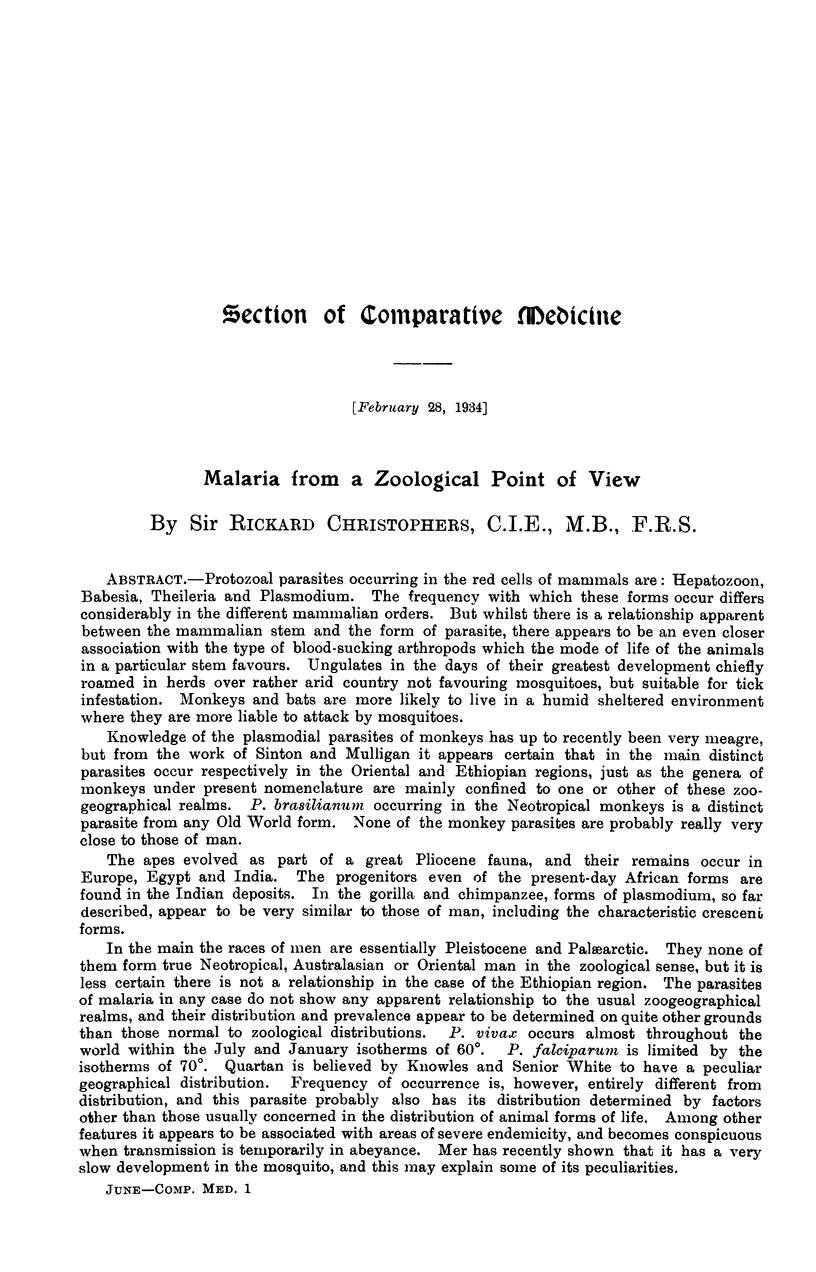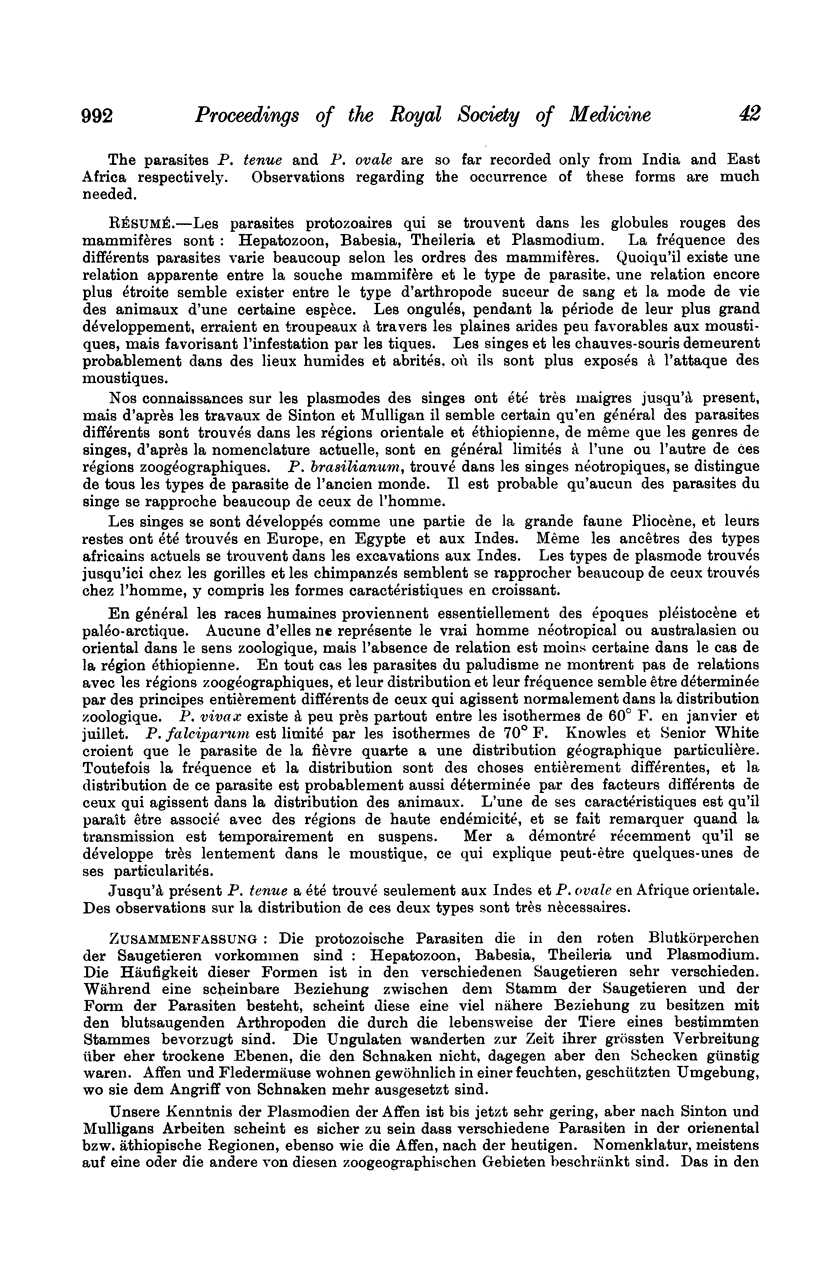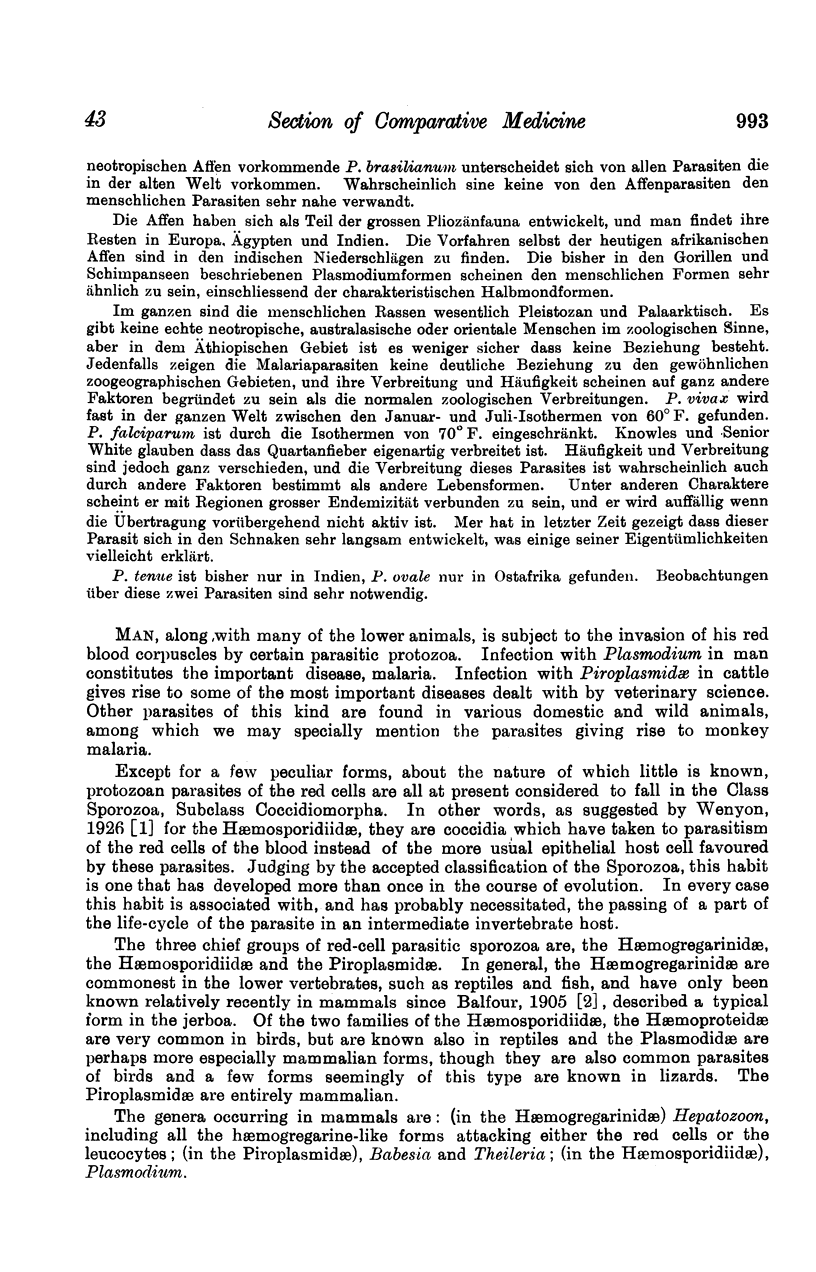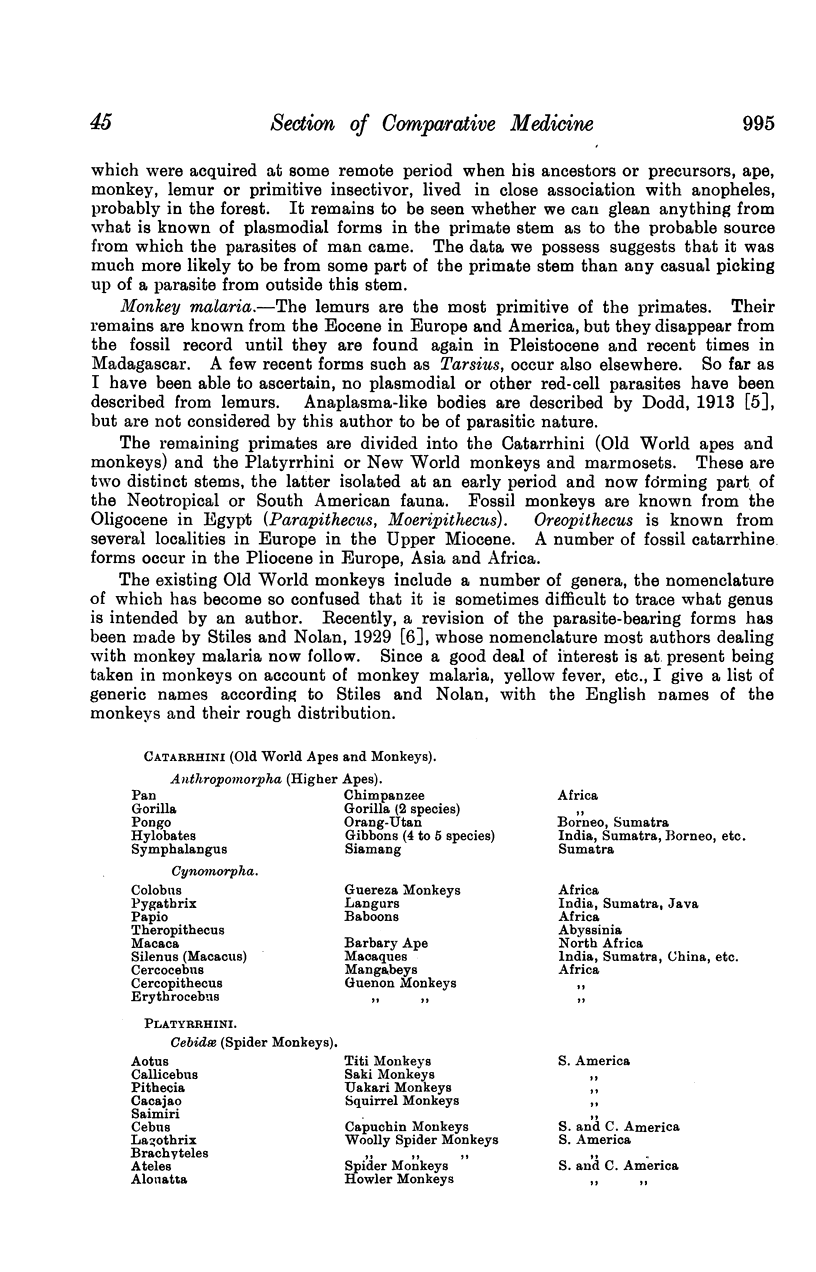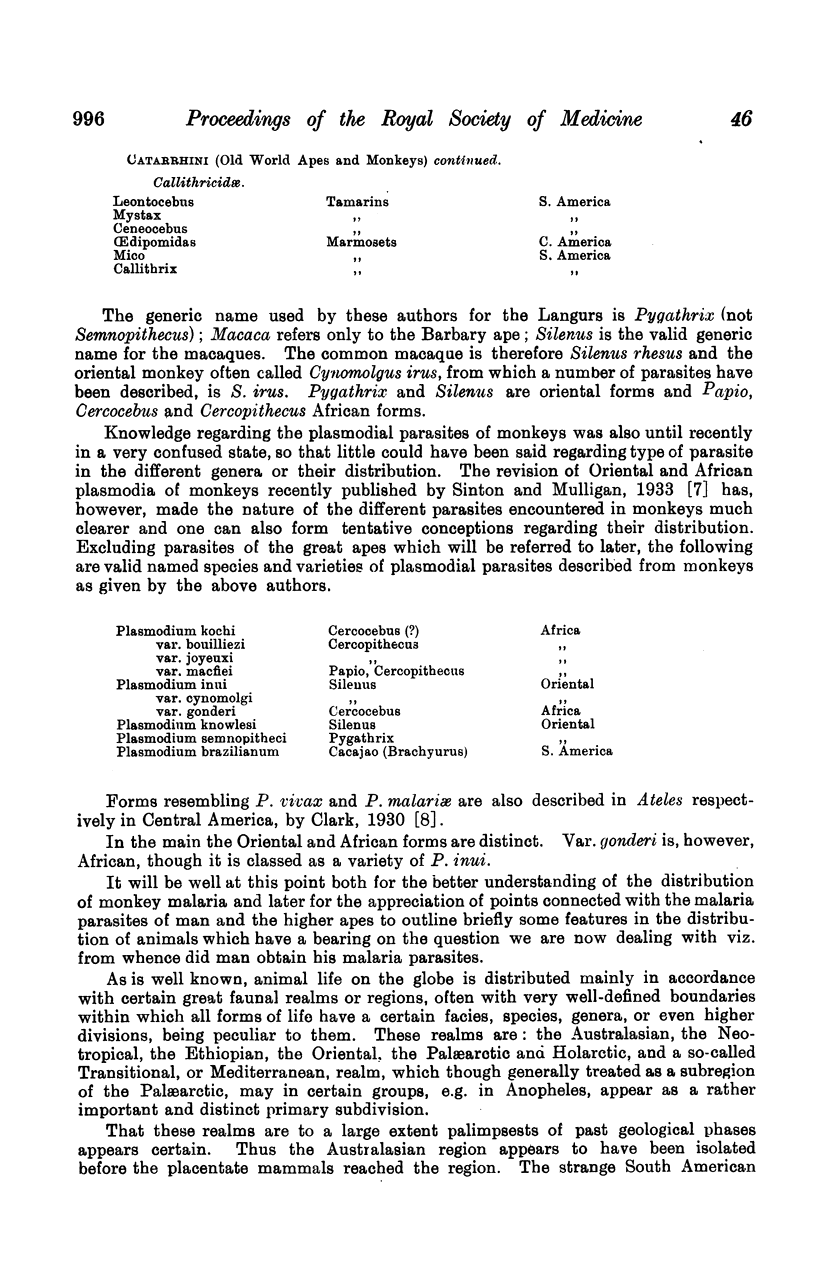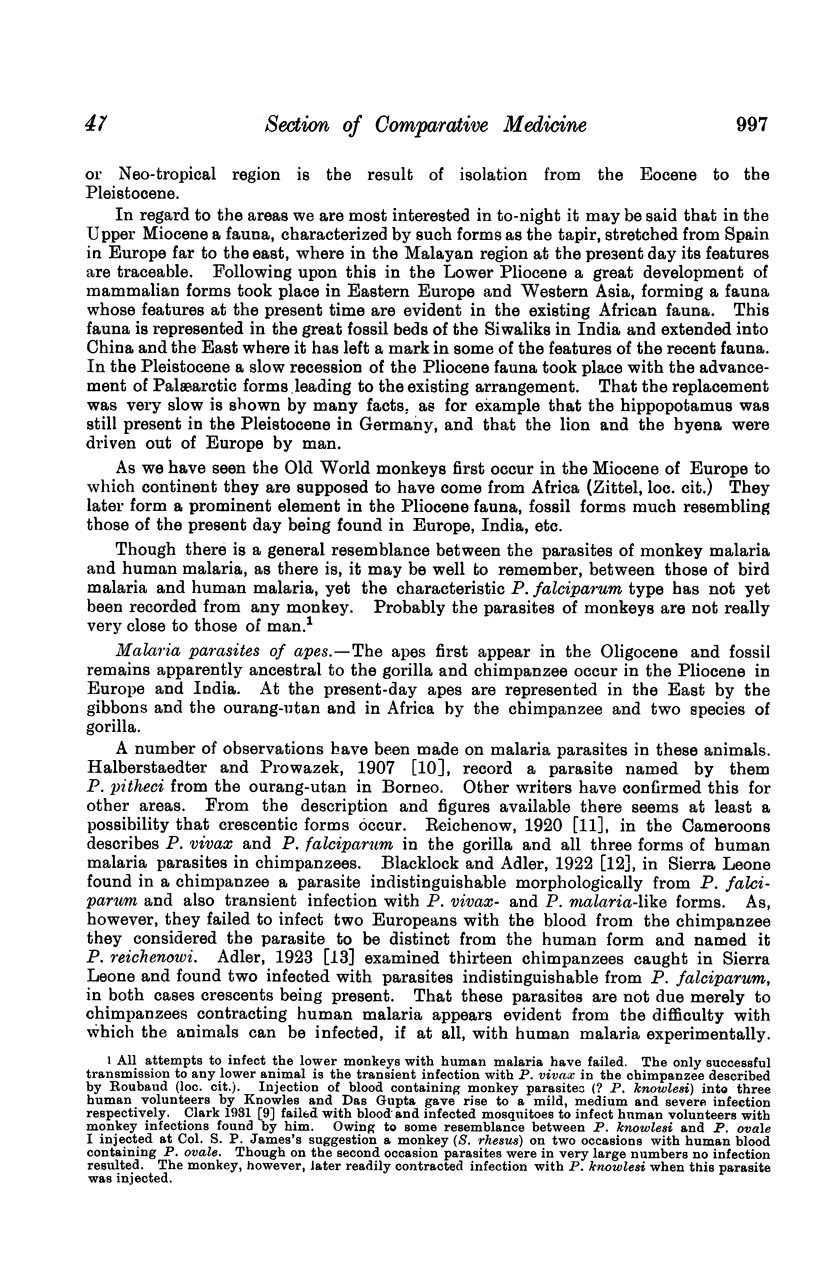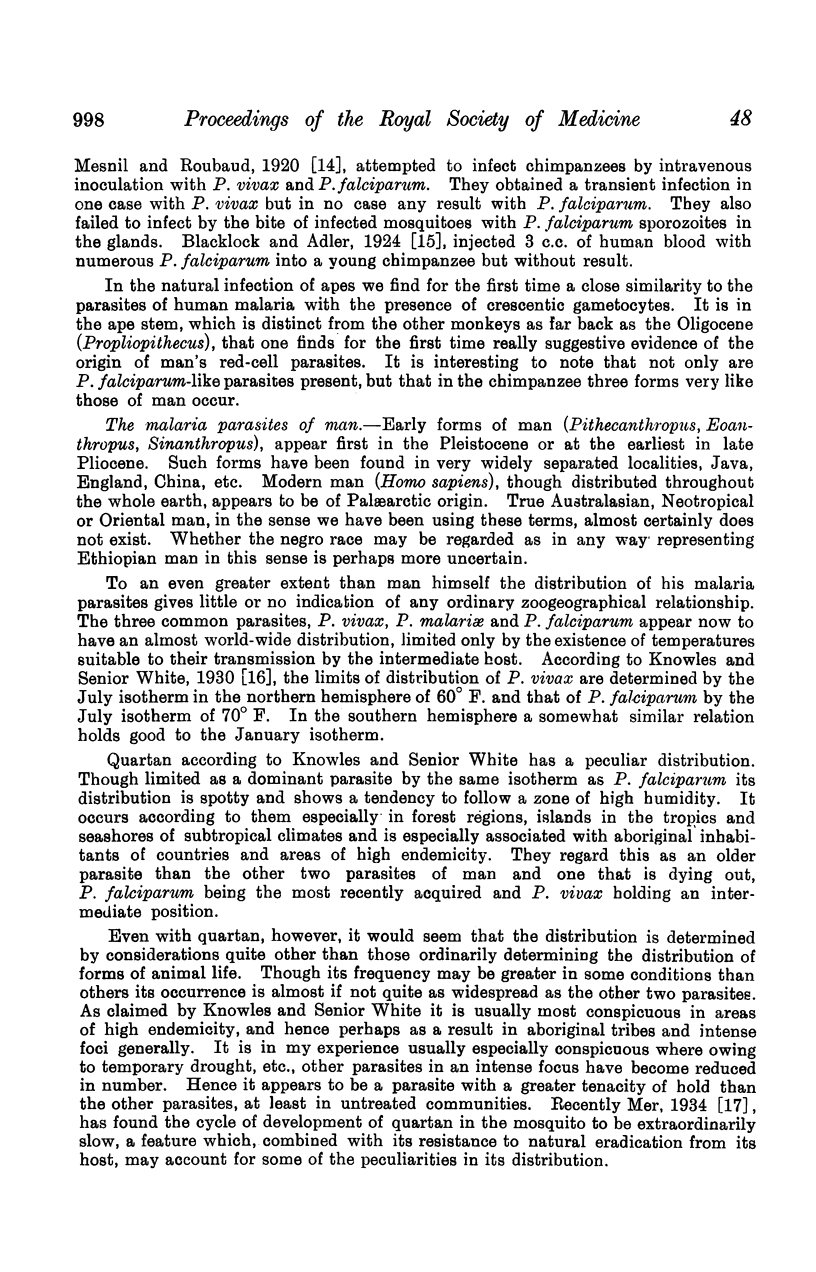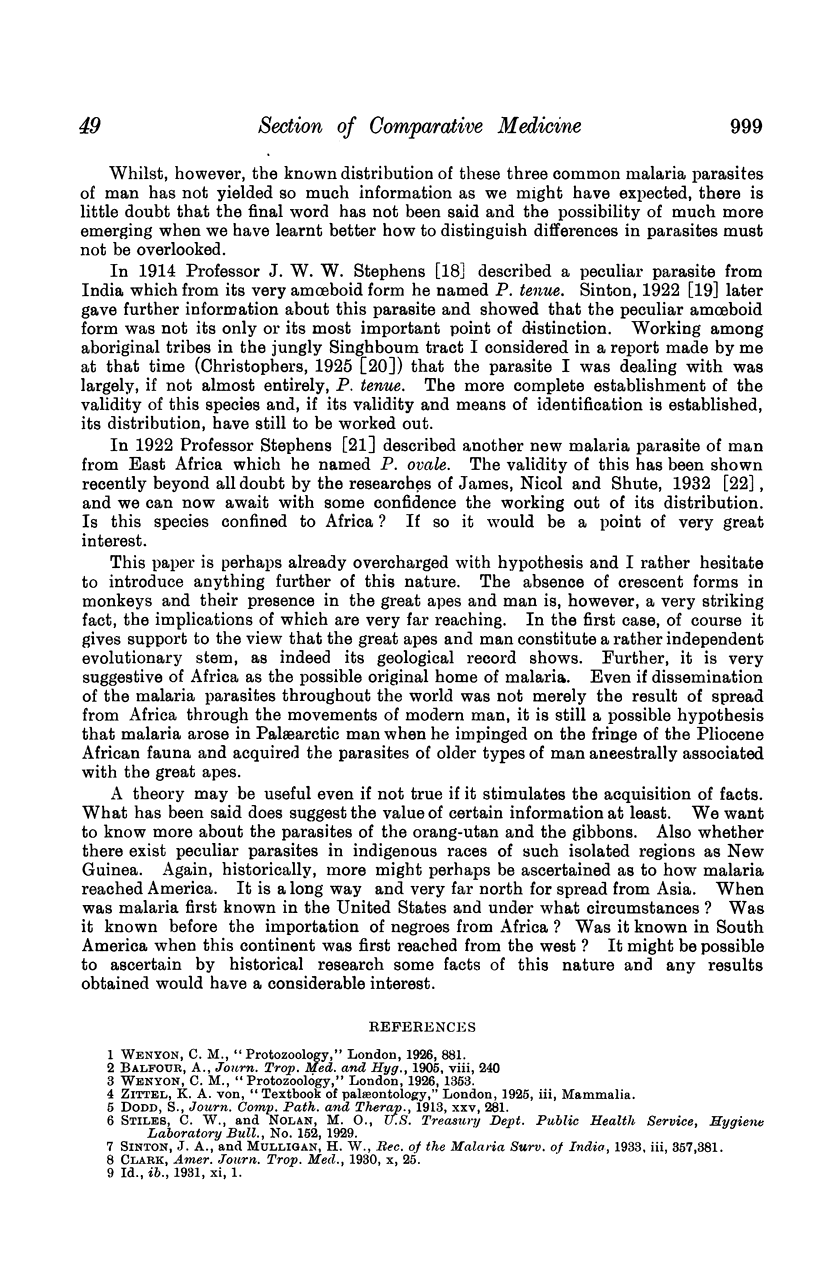Abstract
Protozoal parasites occurring in the red cells of mammals are: Hepatozoon, Babesia, Theileria and Plasmodium. The frequency with which these forms occur differs considerably in the different mammalian orders. But whilst there is a relationship apparent between the mammalian stem and the form of parasite, there appears to be an even closer association with the type of blood-sucking arthropods which the mode of life of the animals in a particular stem favours. Ungulates in the days of their greatest development chiefly roamed in herds over rather arid country not favouring mosquitoes, but suitable for tick infestation. Monkeys and bats are more likely to live in a humid sheltered environment where they are more liable to attack by mosquitoes.
Knowledge of the plasmodial parasites of monkeys has up to recently been very meagre, but from the work of Sinton and Mulligan it appears certain that in the main distinct parasites occur respectively in the Oriental and Ethiopian regions, just as the genera of monkeys under present nomenclature are mainly confined to one or other of these zoo-geographical realms. P. brasilianum occurring in the Neotropical monkeys is a distinct parasite from any Old World form. None of the monkey parasites are probably really very close to those of man.
The apes evolved as part of a great Pliocene fauna, and their remains occur in Europe, Egypt and India. The progenitors even of the present-day African forms are found in the Indian deposits. In the gorilla and chimpanzee, forms of plasmodium, so far described, appear to be very similar to those of man, including the characteristic cresceni forms.
In the main the races of men are essentially Pleistocene and Palæarctic. They none of them form true Neotropical, Australasian or Oriental man in the zoological sense, but it is less certain there is not a relationship in the case of the Ethiopian region. The parasites of malaria in any case do not show any apparent relationship to the usual zoogeographical realms, and their distribution and prevalence appear to be determined on quite other grounds than those normal to zoological distributions. P. vivaxoccurs almost throughout the world within the July and January isotherms of 60°. P. falciparum is limited by the isotherms of 70°. Quartan is believed by Knowles and Senior White to have a peculiar geographical distribution. Frequency of occurrence is, however, entirely different from distribution, and this parasite probably also has its distribution determined by factors other than those usually concerned in the distribution of animal forms of life. Among other features it appears to be associated with areas of severe endemicity, and becomes conspicuous when transmission is abeyance. Mer has recently shown that it has a very slow development in the mosquito, and this may explain some of its peculiarities.
Full text
PDF